Laurie's Blogs.
Apr 2017
Puppy epiphanies
On Saturday, I had an interesting conversation with one of my coworkers. She was telling me about two dogs she had seen recently; one a puppy and one a 3-year old. Both dogs had been referred with essentially an ‘open diagnosis’ (i.e. the others that had seen the dogs didn’t know why the dogs were moving oddly.) Basically, my colleague found not much more than uncoordinated dogs that didn’t know where their rear ends were. She had noted that in both cases, and one other she had seen a couple of years ago, the dogs had been allowed to just run and run like crazy as puppies, mostly off leash, and she thought it might not be a coincidence that they were all oblivious to ‘where there rear-end was’.
It made a light bulb go off in my head about the puppy currently staying with me! (We’re babysitting 2 borzois at my house this week.) The 6-month old boy doesn’t know where his rear end is either! Even to the untrained eyes (i.e. my husband and son) the puppy ‘walks weird’. When I checked him out I just found a minor SIJ dysfunction and mild back pain that corrected with some manual therapy, but he’s still walking weird. Ironically, he also goes for long runs and walks.
So, I starting thinking, ‘what would be some very basic exercises that puppy owners should incorporate into their puppy training to help them learn rear end awareness?’
1)Backing up. You can train this any way you like. However, I like to walk a dog forwards through a narrow passage way, and then stop and ask them to back up in order to get back out.
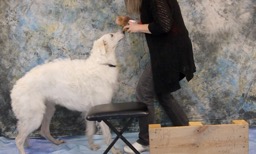
2)Obstacles to step over - slowly. This one is easy; cavalletis, sticks or poles, toys, etc.
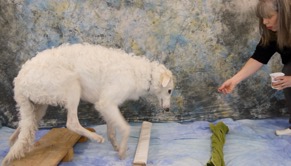
3)Weaving – figure of 8’s
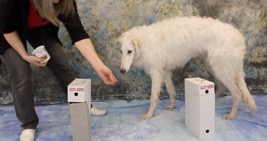
4)Walk the plank

5)Balance exercises – lifting one leg at a time – especially a front leg.
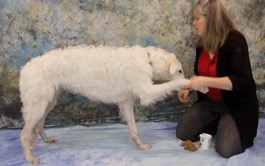
6)WALKING on different terrains – i.e. hills, wooded areas, tall grass, deep snow, shallow water, sand, river rock, gravel, pillows, etc.
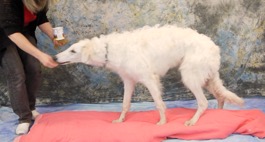
7)Walking with a bandage on the rear end for body awareness. (Any way you want to loop it!)

8)Rub or Tap the rear legs.
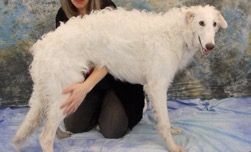
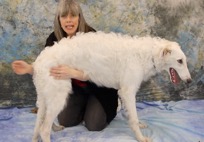
Don’t forget to make it fun, and incorporate treats, and be sure to give the puppy lots of praise with each activity.
People who train for agility excel at building puppy rear-end awareness simply with the activities they do to introduce their dogs to different ‘baby-sized’ pieces of equipment. However, for the rest of us, the ideas up above might help us to help our puppies & puppy patients to ‘bond with their rear-ends’ before it causes problems or injuries.
I hope this gets you thinking!
Cheers,
Laurie


